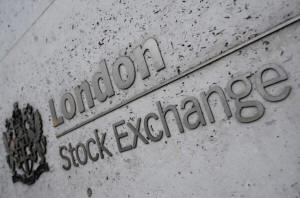|
Trade war fears grip stocks, dollar
drives higher
 Send a link to a friend
Send a link to a friend
 [June 28, 2018]
By Marc Jones [June 28, 2018]
By Marc Jones
LONDON (Reuters) - Pressure on world shares
from a U.S.-driven trade dispute mounted on Thursday, as a fast-charging
dollar and a jump in oil prices also cranked up the pain in emerging
markets.
Europe's bourses inched lower as traders positioned for a potentially
fraught meeting of EU leaders [.EU], with the mood set overnight by
two-year lows for Chinese stocks and a six-month low for the yuan.
They, like Wall Street [.N], had been buffeted again after U.S.
President Donald Trump and White House economic adviser Larry Kudlow
outlined plans to clamp down on Chinese acquisitions of sensitive
American technologies.
Asian shares had reached a nine-month trough, while MSCI's emerging
market index - which also includes other hard-hit countries including
Mexico, Brazil, Turkey and South Africa - dropped to its weakest in
almost a year.
MSCI's broadest gauge of the world's stock markets meanwhile fell to its
lowest in almost three months and was on course to post its fourth
losing month in the last five.

"If the trade war becomes bigger and bigger and bigger the impact will
be very strong," said London & Capital's Chief Investment Officer Pau
Morilla-Giner.
"You could see tech (stocks) taking a lot of impact... and you could see
some big negative numbers on the main indexes," though he added he did
not expect the situation to escalate to a full-blown crisis at this
point.
There were other signs too that markets were getting nervous about the
economic impact of the dispute.
U.S. Treasury and German Bund yields remained near one-month lows as
bond investors sought out the guaranteed returns that stocks cannot
offer.
The U.S. 2- to 10-year yield curve, whose flattening can be an early
warning indicator of recessions, stayed pinned near the 11-year low of
31 basis points it had hit on Wednesday. A dip in Italian yields ahead
of a key bond sale there did though point to some risk appetite
returning.
Analysts cited local reports that tax cuts and a citizens' income would
not be introduced next year as another factor boosting Italian
government bonds.
"The general tone from the Italian government has been a little bit more
conciliatory, which has given markets some comfort that the budget
deficit should stay under control," said DZ Bank analyst Andy Cossor.
A European Union summit scheduled to begin later in the day could prove
disruptive to markets, though, as embattled German Chancellor Angela
Merkel seeks broader agreement on migration.
HOT OIL
Two main forces were playing out in the currency markets.

[to top of second column]
|

The London Stock Exchange Group offices are seen in the City of
London, Britain, December 29, 2017. REUTERS/Toby Melville/File Photo

The trade tensions pushed the dollar - seen as one of the safest
investments especially if U.S. interest rates keep rising - to test a
one-year high against a basket of other top currencies. [FRX/]
Though the yen had shown some strength overnight, it remains firmly
below a 2018 high of above 111 yen per dollar hit last month. The
Swiss franc, another risk barometer, also remains firmly below 1.16
per euro, a level considered too strong for the central bank’s
comfort.
In emerging markets, clear signs are emerging that traders think
higher oil prices will lead to higher inflation in big oil importing
economies, hurting their growth levels.
The Indian rupee hit an all-time low of 69.09 to the dollar during
the Asian session, while Indonesia's rupiah slumped as much as 0.83
percent to touch its weakest since October 2015.
U.S. crude futures had surged 3.16 percent on Wednesday, rising to
as much as $73.06 a barrel, the highest since November 2014, on
signs of tight supply.
U.S. crude stocks fell nearly 10 million barrels last week while a
fall in Canadian exports helped drain supplies of heavy crude across
North America.
White House pressure on other countries to stop all imports of
Iranian oil is seen as creating a shortage, while a power struggle
in Libya has left it unclear whether its internationally recognized
government or rebels will handle oil exports.
U.S. crude futures traded back a touch at $72.62 a barrel, while
global benchmark Brent was 16 cents lower at $77.46.
"A number of people will be revising higher their assumptions for
the loss of Iranian barrels," Harry Tchilinguirian, strategist at
French bank BNP Paribas, told Reuters Global Oil Forum.

"If we assume that OPEC and its allies will deliver a near 1 million
barrels per day (bpd) increase in production, most of it will be
offset by lower volumes out of Iran."
(Reporting by Marc Jones, additional reporting by Christopher
Johnson and Abhinav Ramnarayan; editing by John Stonestreet)
[© 2018 Thomson Reuters. All rights
reserved.]
Copyright 2018 Reuters. All rights reserved. This material may not be published,
broadcast, rewritten or redistributed.
Thompson Reuters is solely responsible for this content. |